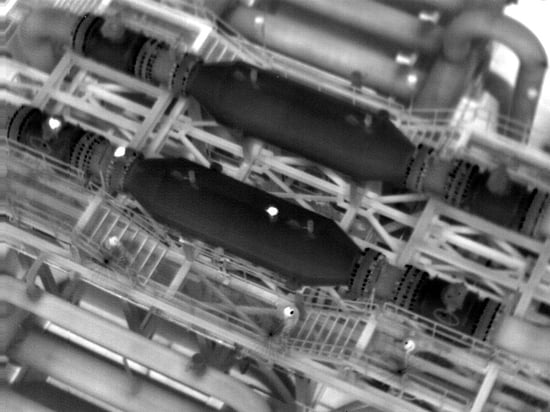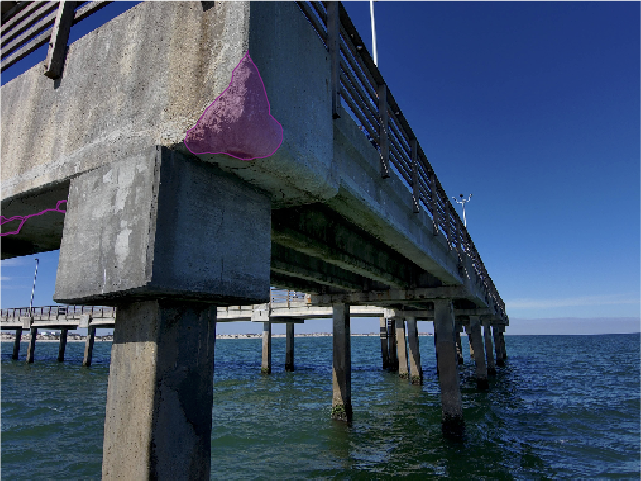INTRODUCTION:
Stress corrosion cracking (SCC) continues to be an integrity concern for high value assets in energy sector – wellheads, offshore production platforms, processing plants, power plants and pipelines. Stress corrosion cracking of line pipe from outer side or inner side involves slow crack growth at stresses which may be as low as half the yield strength of the steel. SCC occurs when at least three factors are present – a susceptible material, exposure to a corrosive environment, and stresses (mechanical loading) above a threshold.
Engineers can take the most effective step in prevention against SCC through selection of right material for pipelines and plant piping and structure. NACE MR0175 / ISO15156 provides general principles for selection of cracking-resistant material (Part 1), cracking-resistant carbon and low alloy steels (Part 2) and cracking-resistant CRAs (Corrosion Resistant Alloys) and other alloys (Part 3). The industry standard for SCC is ISO15156-3 which defines and recommends materials for following different types of corrosion cracking:
- SCC - Stress corrosion cracking
- SZC – Soft zone cracking
- SSC - Sulfide stress cracking
- SWC – Stepwise cracking
- GHSC – Galvanically-induced hydrogen stress cracking
- HIC – Hydrogen-induced cracking
- SOHIC – Stress-oriented hydrogen-induced cracking
Another important step to guard against SCC is procurement of equipment and fittings which are right for your process service conditions (Pressure, Temperature, existence of H2S, Chlorides etc). For instance, API Specification 6A (ISO 10423) provides definition of standard service conditions and introduces the concept of product specification levels (PSL’s). The PSL’s define different levels of effort, or levels of technical requirements which may be specified for a product / equipment.
Generally, these levels represent industry practice followed by OEMs who perform verification testing on prototypes or production models of API Specification 6A (ISO 10423) equipment to ensure that the performance requirements (PR’s) specified for pressure, temperature, load, mechanical cycles, and standard test fluids are met in the design of the product.
Finally, in the fight against SCC, O&M managers need to periodically assess the integrity of their asset through effective SCC integrity management program which should help in defining combined effects of cyclic stresses under corrosive environments and risks associated with expected / impending failures identified through direct assessment procedures. Stress corrosion Cracking Direct Assessment (SCCDA) is a structured process that is intended to assist O&M managers in assessing the extent of stress corrosion cracking (SCC) on a section of plant piping or pipeline.
.jpg?width=640&name=HDZ_0110%20(1).jpg)
In Oil and Gas transmission and distribution pipelines, visible manifestations of these failures are groups, or colonies, of cracks oriented essentially longitudinally along the pipe and which can penetrate to various depths up to the wall thickness. Failure occurs when cracks penetrate the wall and result in a leak, or, when the wall is not penetrated, the crack or group of cracks reach a critical size, resulting in ruptures that can propagate for considerable distances beyond the ends of the initiating stress corrosion cracks if the fracture toughness of the steel is low.
SCC failures in gas transmission pipelines have been reported mostly in pipe installed for more than 10 years, with no failure of pipe that has been in service for less than 5 years. Over 90% of these failures have been within 16 km downstream from a compressor station, where both the temperatures and stresses are higher than further downstream. Gas temperatures at the times of service failures have been reported as ranging from 10 to 60°C, with most of the temperatures above 35 °C, and while gas temperatures can vary considerably with time, there are indications that where most service failures occurred temperatures were relatively high at times prior to failure.
Primary guidance for managing the integrity of a natural gas pipeline that has a risk of containing stress corrosion cracks is provided in ASME B31.8S. This standard provides guidance for managing SCC by selecting potential pipeline segments, selecting dig sites within those segments, inspecting the pipe, collecting and analyzing data during the dig, establishing a mitigation program, defining the reevaluation interval, and evaluating the effectiveness of the SCCDA process.
For plant piping and offshore platforms ASME B31.3 and API RP 579-1 / ASME FFS-1 provides guidance related to fatigue life prediction methods, which is a relevant issue SCCDA of such assets.
INSPECTION DRONES CAN HELP
Drone-based inspection and assessment surveys can provide SCCDA for Oil & Gas assets. Inspection drones fitted with 3-D laser scanners as well as IR cameras are required to identify SCC defects in transport pipelines and complex plant piping. 2D infrared thermography is insufficient to infer and obtain the 3D structure of the scene. Sensor fusion approach is used by combining infrared thermography with 3D laser-scanned data to detect internal defects automatically in as-built plants and pipelines during their service lives to ensure structural safety. Both the thermal infrared camera and the laser scanner are internally and externally calibrated and using the results of intrinsic and extrinsic calibration, infrared thermography is registered with the laser-scanned data. As a result, each pixel of infrared thermography is mapped to the corresponding 3D point in the laser-scanned data. This allows combining both infrared thermography and laser-scanned data, to superimpose them onto each other, and to use them together for processing and analysis.
Infrared thermography has been proven as a cost-effective way to survey and monitor large areas of as-built pipelines because of its non-contact and non-destructive temperature measurement properties requiring no shutdown or preparation. By detecting hidden defects in process pipelines, such as SCC damage, infrared thermography allows for planning to repair or replace critically damaged areas before they disrupt the production process.

Tags
Oil and Gas


.png)
